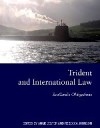Many people joining Action AWE will already be skilled and experienced in getting their message out via the mass media but others may welcome some pointers. Some actions will be planned and publicised in advance, others will be unannounced and won’t require any media work until after the event.
 In addition to the mainsream media, compile a list of Social Media sites, blogs and forums which comment on your issues and prepare news and updates for them.
In addition to the mainsream media, compile a list of Social Media sites, blogs and forums which comment on your issues and prepare news and updates for them.
Press work can be quite time consuming. If you’re short of time when researching press contacts its a good idea to make sure you contact News Agencies. Many mainstream media news sources simply buy most of their news from agencies. If you don’t issue a press release to agencies you’ll be missing the opportunity to have your news made available to thousands of news outlets. Type ‘news agencies’ into a search engine and take your pick from the results!
Organising your media work
- Work out who in your group will co-ordinate media work. Ideally this person or persons will involve group members in the actual communication with the media so that a diversity of voices are represented. The co-ordinator should also keep the whole group informed about what is being said to the media.
- You may want to arrange a workshop for the group (or some of the group) on media issues. If so you could contact the Action AWE Media Working Group for a facilitator.
- Work out as a group what will be the main themes of your communications with the media.
- About two months before your action send out a press release to alert your target media. Follow this up with phone calls to check whether your press release has reached the paper/broadcast station. These calls will give you the chance to develop the story and to build up contacts with journalists. If that goes well you may be able to encourage a journalist or two to attend your action or even accompany you to it.
- About ten days before the action send a second press release and again follow it up with calls. This should repeat the basics of the story but should include any developments/reactions. At this stage a major aim is to get journalists to come to the event.
- Make sure that journalists will have mobile numbers of people they can contact at the action itself.
- Assign at least one person to take high-resolution digital images of the action and work out arrangements to get these e-mailed to journalists when and as soon as required. Digital film footage will also be useful.
- On the days of the action the co-ordinator should be gathering the elements of the story to pass on to the media. There would be scope for a couple of press releases during the event itself.
- Have people (both arrestables and support people) ready at the action to give interviews.
- Have people primed to clip newspaper articles and record news broadcasts.
Some pointers about press releases and contacts
- Use e-mail to send your press releases -faxes are almost universally redundant. Send the message to yourself and put the media contacts in BCC.
- Keep the releases short and simple. See here for a sample press release (this is not a model press release - it’s just one way of doing it that generally works).
- Develop your own contact list (see below for basic UK and Scottish contact lists. You will want to customise these for your use. To do so use the directory on the Media UK website

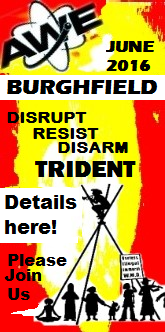
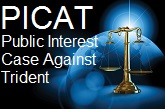
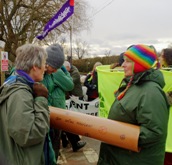





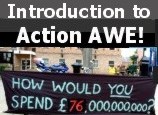

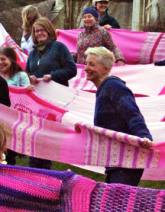
 Nuclear weapons crime in the UK has been reported to Thames Valley Police.
Nuclear weapons crime in the UK has been reported to Thames Valley Police.









